Всё о разработке Star Control и Star Control II
Эскизы, скетчи и прочие материалы с различных этапов разработки. Cобрание изображений обложек и дисков. А также интервью с разработчиками.
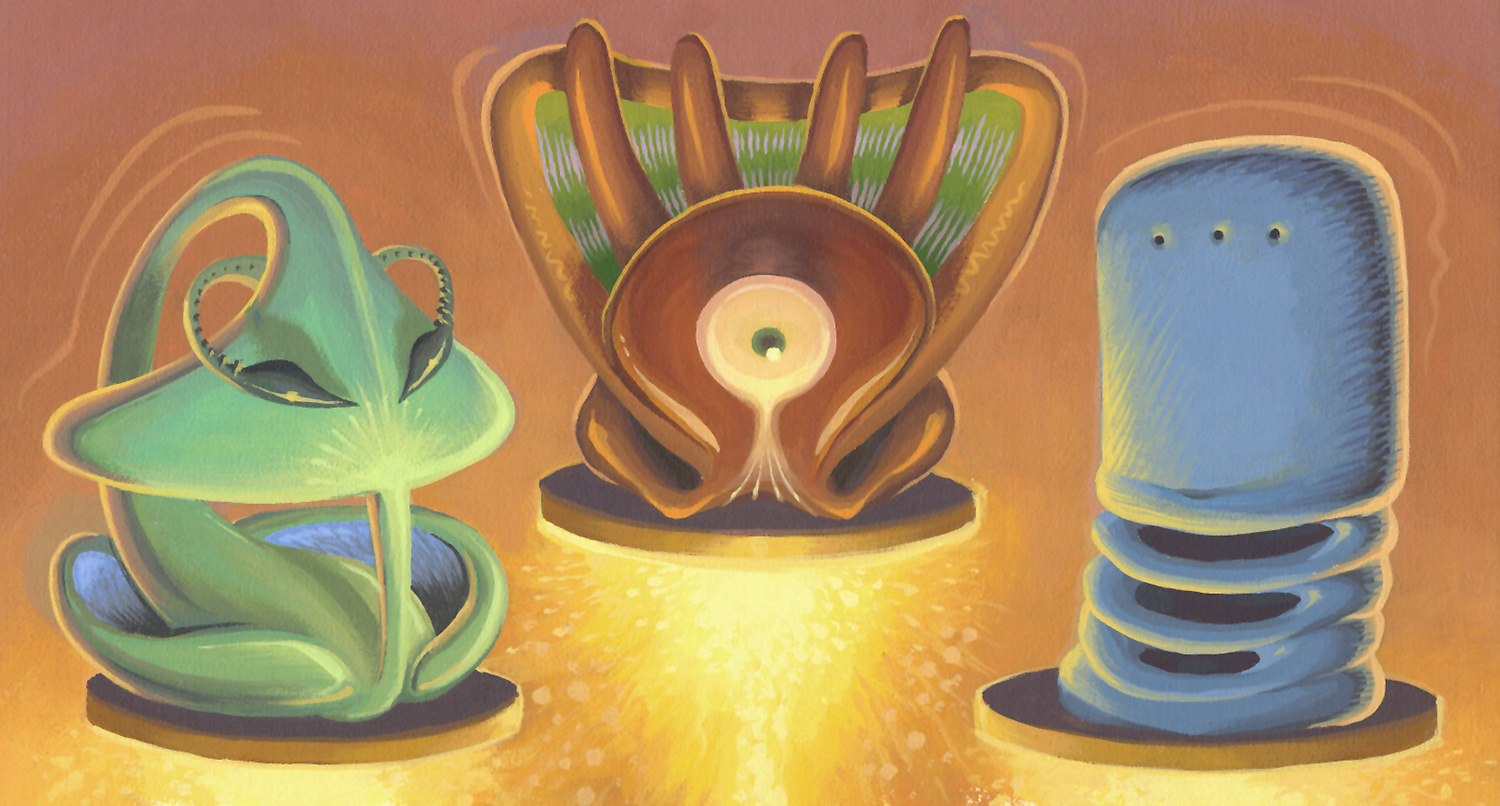
Эскизы, скетчи и прочие материалы с различных этапов разработки. Cобрание изображений обложек и дисков. А также интервью с разработчиками.

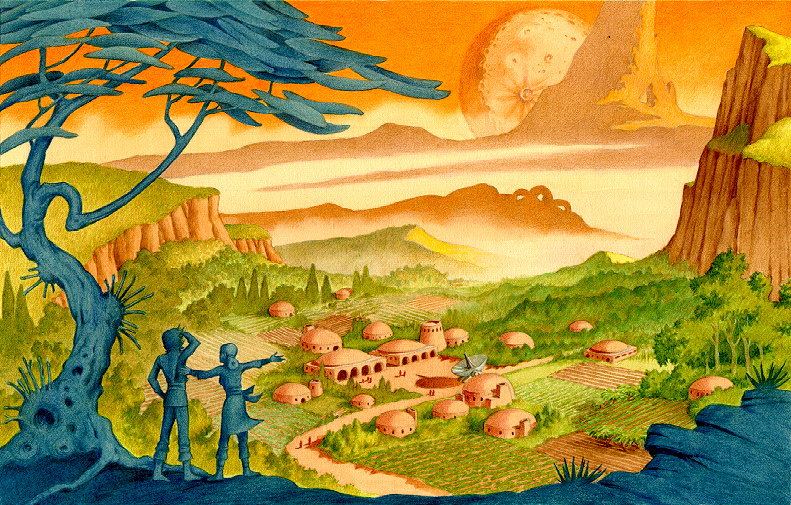














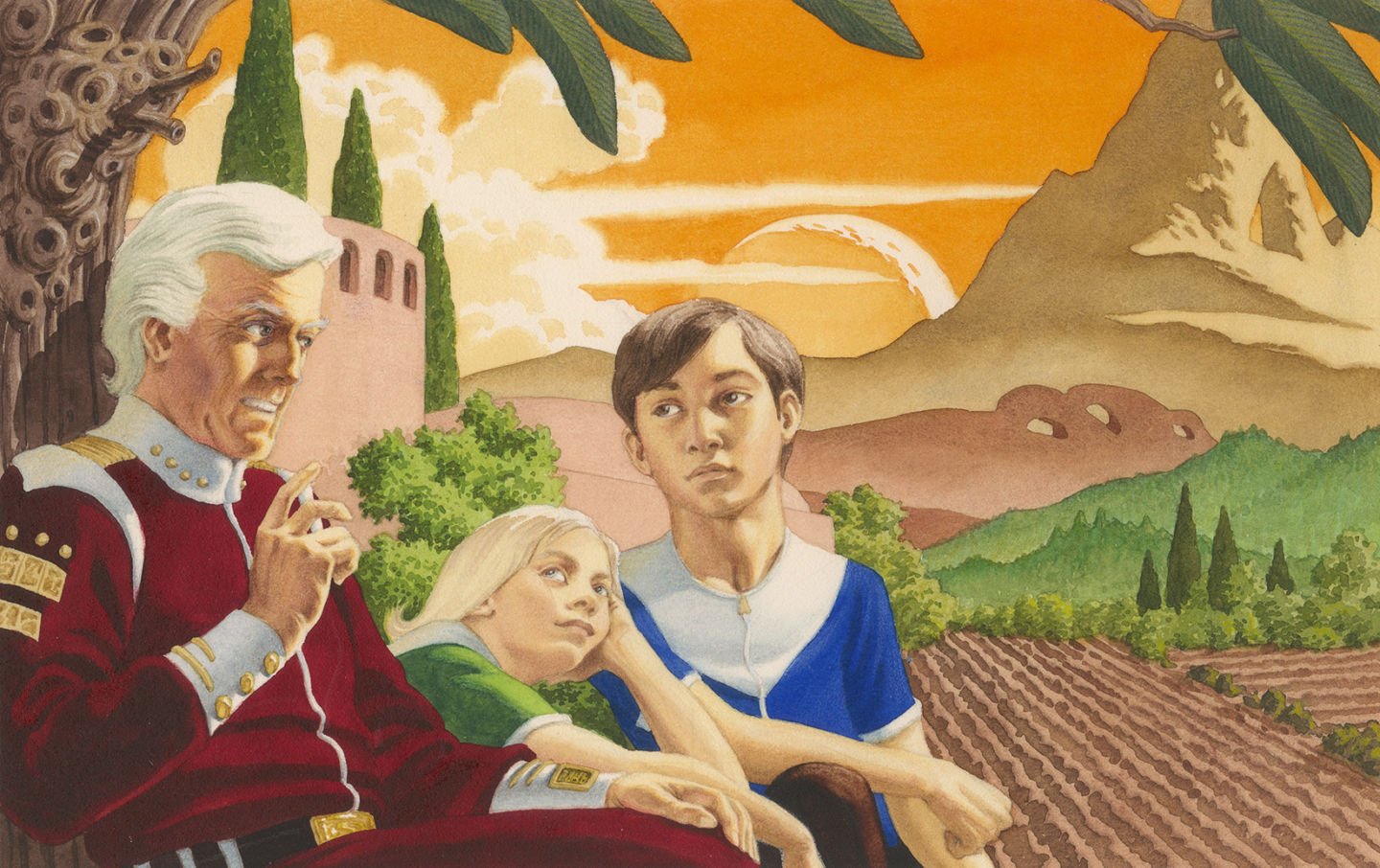



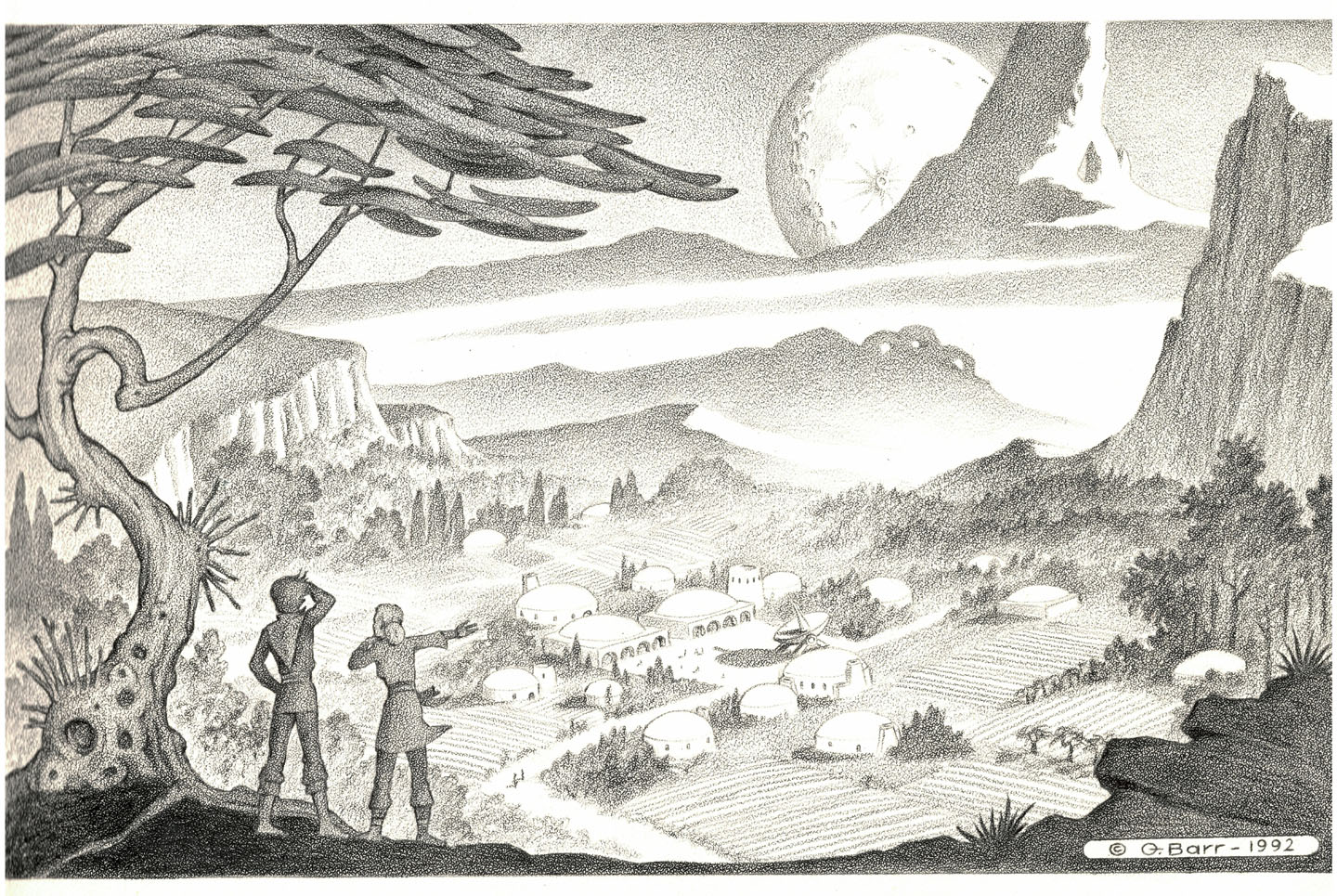
Андросинты

Дети Глубины уничтожают планету Сирен. Не вошло в игру.

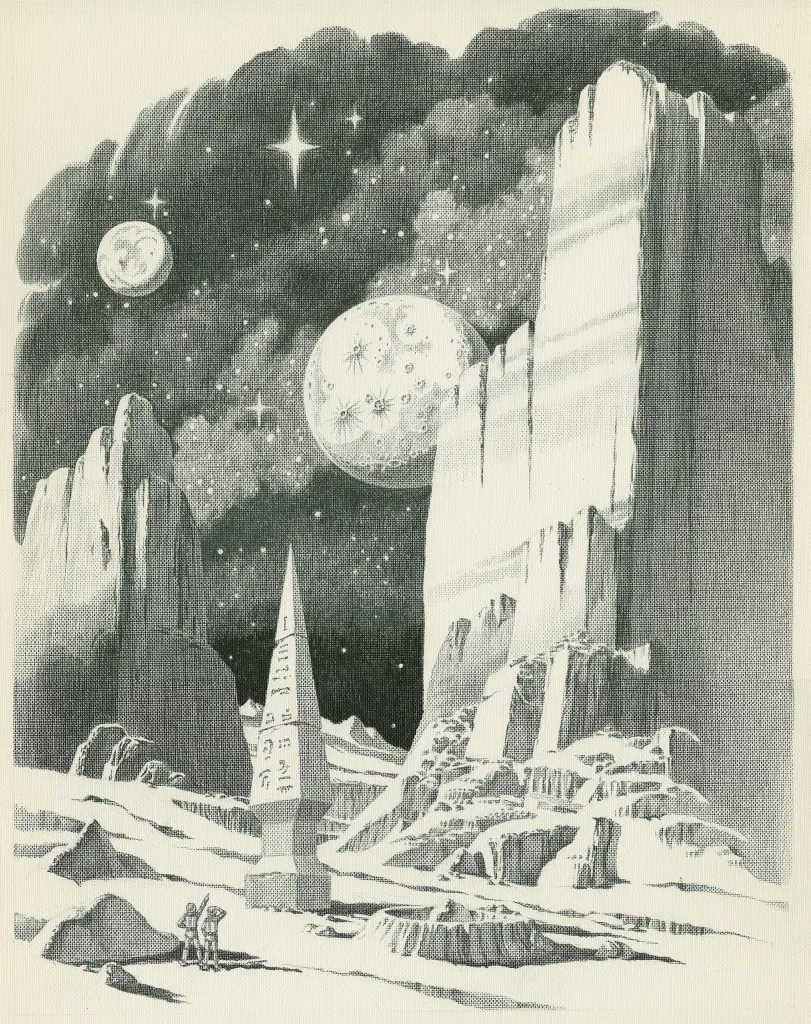









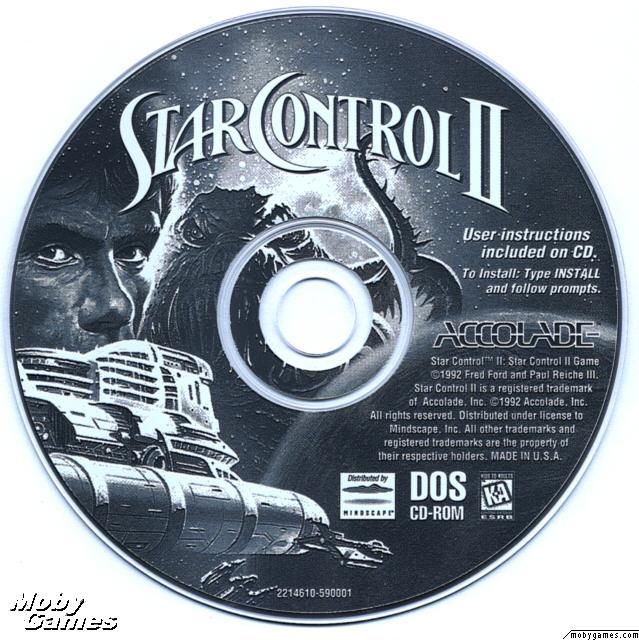

Воспоминания Lee Hutchinson - сценариста Ur-Quan Masters II
По какой-то причине — возможно, потому, что я не люблю выбрасывать компьютерные игры — эта коробка с играми до сих пор лежит в моем шкафу, следуя за мной через полдюжины переездов. А для людей, которым, возможно, не посчастливилось застать момент, когда игра только вышла, или у которых не было возможности купить коробочную версию, я хотел сделать несколько снимков её содержимого. Там есть отличные вещи.
Одно важное предостережение: я не делал никаких снимков оригинальной и дополнительной карт гиперпространства. Оригинальная карта определенно заслуживает места на этих изображениях, потому что она была в оригинальной коробке, но она и доп. карта, которая шла с книгой подсказок, висели на стене моего офиса в течение нескольких лет и сейчас аккуратно свернуты в шкафу. Я могу вытащить их и сделать несколько дополнительных снимков, если это необходимо, но вместо того, чтобы разгребать кучу коробок, я решил, что просто позволю им остаться на месте.
Итак, коробка! Это большая прочная полноразмерная коробка с программным обеспечением, а не маленькие хлипкие коробочки половинной высоты, которые начали появляться несколько лет спустя.

И вот большой геройский снимок всего, что было внутри — всего, кроме карты галактики, как уже отмечалось:

Четыре дискеты, чтобы править всеми!

Руководство:
Инвентарная карточка «что в коробке», гарантийная регистрационная карточка и бланк на обмен дискет, если вам понадобилась версия игры на 5,25-дюймовых дискетах вместо 3,5-дюймовых, которые поставлялись с розничной упаковкой. (Вполне возможно, что в 1992 году у кого-то не было компьютера с 3,5-дюймовым дисководом — у моей семьи не было до конца 1991 года!)
Две формы заказа: одна на случай, если вы решили, что вам нужна копия оригинальной игры «Star Control», а другая — на случай, если вам нужна либо официальная книга подсказок, либо некая головоломка Ур-Кван! (Я допрашивал Фреда и Пола об этой головоломке, так как никогда ее не видел, но они оба настаивают, что не помнят рекламные предметы тех времен. Увы.)
А вот это забавно: «приложение к руководству», полное последней информации, которая не вошла в само руководство. (Большинство игр также имели файл README.TXT на установочных дисках для самой последней информации.)
Prodigy! Помните Prodigy? Вы не знаете? Боже, как я стар. (Речь не о музыкальной группе - прим. пер.)
Это вам не розничная версия игры без каталога и путеводителя по новинкам!
И, наконец, хотя это и не входило в комплект, вот несколько фотографий официальной книги подсказок к игре, битком набитой секретами и шутками от Фреда и Пола.
Вот и всё! Надеюсь, вам понравилась прогулка по забытым артефактам из коробки. Вот те игры, которые заставляют нас возвращаться на десятилетия назад — такие игры, как UQM. Поздравляем с 30-летием окончания Войны Доктрин и приветствуем три десятилетия прекрасных воспоминаний. Пусть к ним скоро присоединятся многие другие!
Визитка одного из "отцов" серии Фреда Форда

Коллекционная карточка Star Control



Коллекционная карточка Star Control


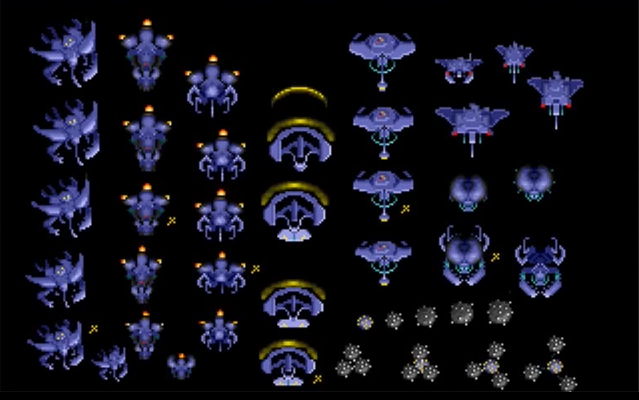







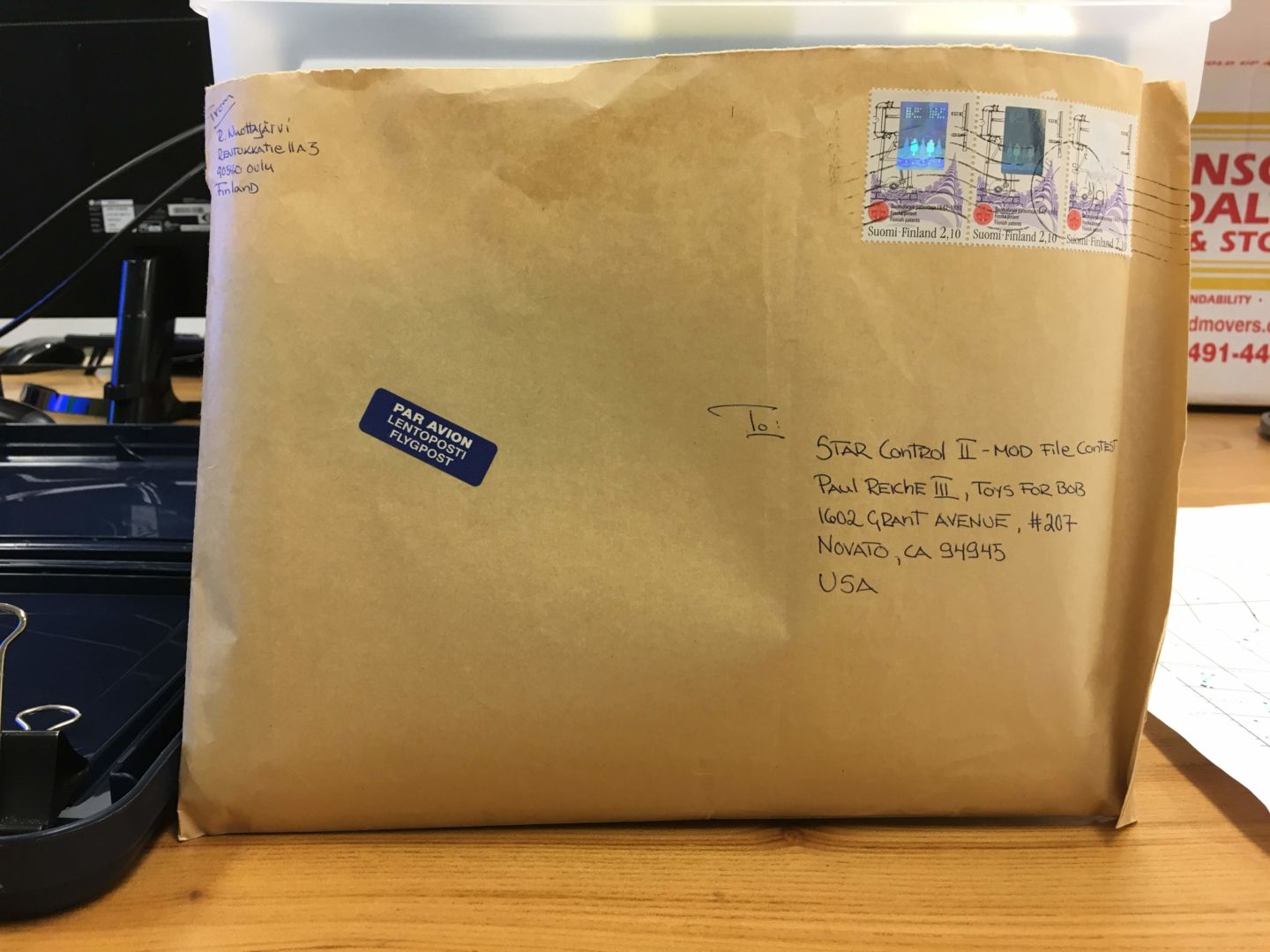


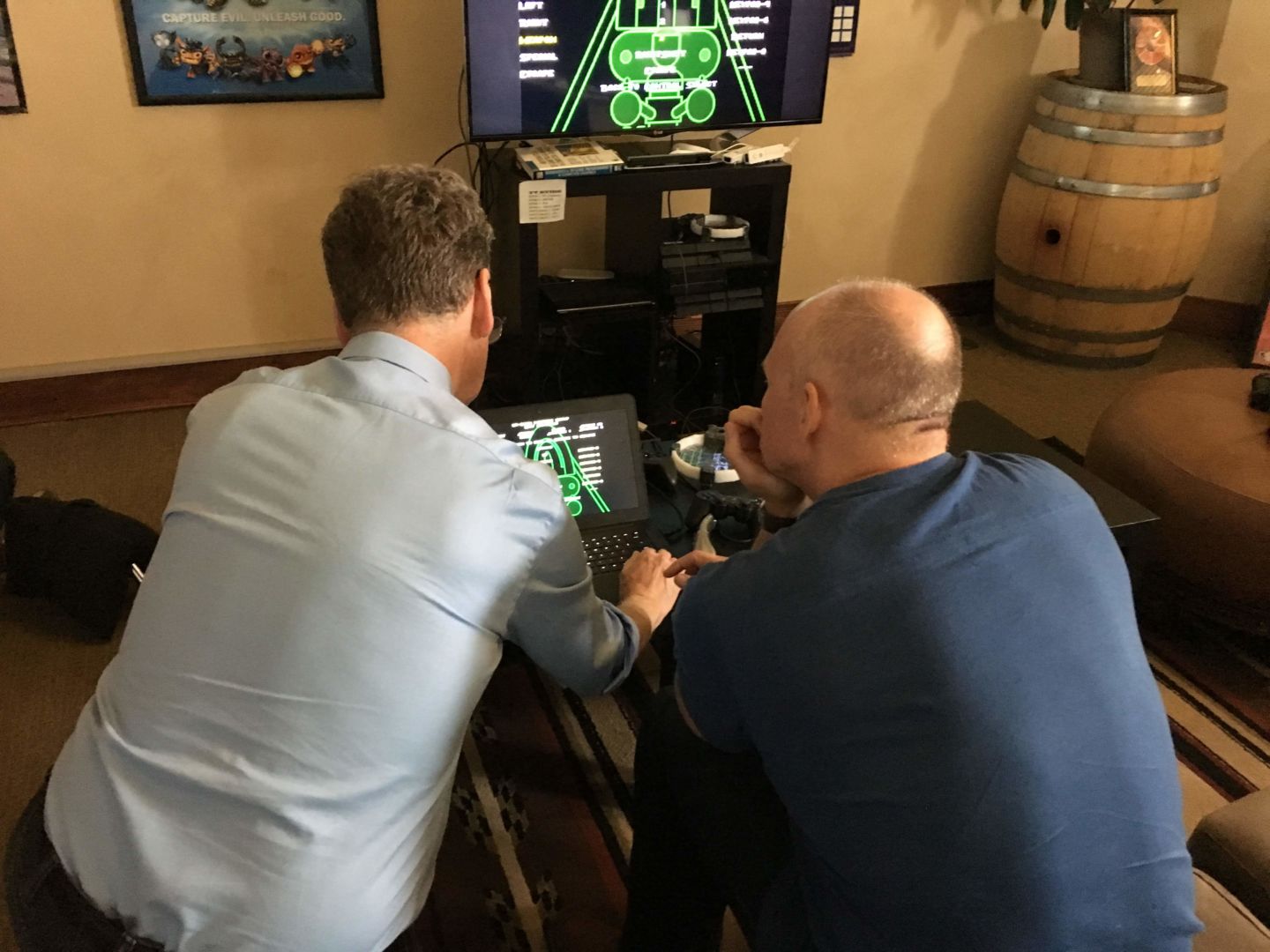

Видео с Ars Technica: Фред Форд и Пол Ричи III о создании игр серии Star Control -
Кратко: часть 1, часть 2 и большое 2-часовое интервью
Кратко: часть 1, часть 2 и большое 2-часовое интервью
Автор перевода Андрей Копылов.
Ars Technica: истории с поля боя. Star Control II.
Оригинал на видео здесь
Пол: Серия Star Control началась вот с этого дурацкого рисунка. У меня часто разработка игры начинается с таких вот дурацких рисунков. Я не стесняюсь делать рисунки ужасного качества, но здесь, можно сказать, обрисована вся концепция игры. Сначала бои между космическими кораблями, а на основе этого — стратегическая игра. Таков был изначальный план.
Заголовок рисунка: «Научно-фантастический Archon — по телефону!» Archon – серия стратегических игр, в разработке которых участвовал Пол Ричи III. Первая часть серии вышла в 1983 году.

Пол: Привет, меня зовут Пол Ричи.
Фред: А меня — Фред Форд.
Пол: Мы — создатели серии Star Control, включая Star Control II, научно-фантастическую игру в жанре action-adventure, где наша любовь к науке чуть не сделала игру страшно скучной.
(Фред и Пол играют с мечом Grimthwacker из игры The Horde)
НАЧАЛО
Пол: Star Control II: The Ur-Quan Masters предшествовала Star Control I: Famous Battles of the Ur-Quan-Alliance Conflict... Не могу точно вспомнить, но какое-то очень длинное название [Star Control: Famous Battles of the Ur-Quan Conflict Volume IV – прим. пер.] Разработка началась в конце 1988-начале 1989 года. В то время игровая индустрия была совсем не такой, как сейчас, и игры тоже были другими.
Фред: Мы играли в Blood Money, Lemmings, Virus...
Пол: Это был переходный период от времён компьютеров вроде Commodore 64 к PC, графика которого, конечно, постоянно улучшалась, и в конечном счёте к «Амиге», которая тогда нам казалась суперсовременным компьютером с кучей возможностей. Так что и сами разработчики игр росли, начиная с совсем простых игр на PC, и постепенно переходя к более и более крупным проектам. Но мне хотелось сделать научно-фантастическую игру, в которой бы сочетались элементы Space Wars — оживлённых боёв, требующих быстрой реакции, и стратегии один на один.
Фред: Пол дал согласие на разработку трёх игр с Accolade, так что когда я присоединился к команде, он пытался одновременно управлять разработкой двух игр.
Пол: Катастрофа. (смех)
Фред: Период разработки Star Control I был для нас своего рода «медовым месяцем», когда мы только усваивали, что будет работать, а что — нет.
Пол: Разработка началась с самого элементарного компонента геймплея — управления космическим кораблём и стрельбы. Первое, что мы фактически сделали, — это Asteroids в версии для двух игроков. Но нам нужно было отточить бои между кораблями до совершенства, и поэтому мы начали придумывать новые корабли. Нам было особенно важно, чтобы корабли были непохожи друг на друга, и с этого началась идея асимметричных боёв один на один, которую мы с тех пор постоянно использовали (на видео — таблица соотношений сил кораблей в Star Control I из журнала Computer Gaming World). Это значит, что в отличие, например, от Street Fighter, где, по идее, персонажи должны быть сбалансированы по отношению друг к другу, наши корабли были совсем не сбалансированы в бою один на один. Какие-то корабли могли быть очень слабыми, а другие — очень мощными, но целый флот кораблей был бы примерно равен по силе флоту противника, и в конечном счёте всё решалось тем, кто именно сражался против кого. В одной рецензии это обозвали «Камень, ножницы, пар». Мне кажется, это хорошее название.
Пол: В игре был корабль, напоминающий одноимённый крейсер из Battlestar Galactica, треугольный корабль в духе Space Wars, и это стало нашей отправной точкой, основой для некоторых из будущих кораблей, но потом мы начали рассказывать друг другу истории о кораблях, например: почему вот эти инопланетяне вылетают в истребителях? Значит, ими кто-то командует. А кто ими командует? Раз это самый большой корабль, то именно эта раса должна быть во главе. Тогда как мы её назовём? Они — очень древняя раса, так что пусть в их названии будет слово «ур-», что на каком-то старинном языке значит «древний», [на немецком приставка ur- значит «первобытный, изначальный» - прим. пер.] и «кван» просто потому, что это звучит круто. Так что вот как появились ур-кваны.
Пол: И потом, при разработке Star Control II, мы начали размышлять: а почему все эти расы ведут себя именно так? Как это сделать логичным и интересным? Почему вот эта раса, ур-кваны, летает по галактике и всех порабощает? Это ведь очень странно, верно? Так что Star Control I — увлекательная смесь стратегии и экшена, но с точки зрения сюжета достаточно поверхностная. Мы же очень хотели проработать всех этих инопланетян, и так появилась Star Control II.
Пол: С моей стороны, Star Control II началась с одного вопроса: как можно показать другие стороны космической фантастики? Что в Star Trek, что в Battlestar Galactica, что в старых книгах Ларри Нивена и Джека Вэнса — мы впитали в себя представление о том, что люди делают, когда они отправляются в космическое приключение. Так что задача была в том, как все эти идеи собрать таким образом, чтобы из этого можно было сделать игру. Какие моменты слишком скучны, и их можно спокойно выбросить и заменить на что-то другое? Такого ведь тоже достаточно много.
(Пол снова играет с мечом Grimthwacker)
ПРОБЛЕМА С ПЛАНЕТАМИ
Пол: Надо отдать должное, в эти дебри — генерацию планет — Фред не полез. Нужно помнить, что тогда, в 1991 году, ещё не было никаких научных доказательств существования экзопланет. Теперь же их известны тысячи. Но уже тогда у нас было какое-то представление о том, из чего планеты должны состоять. Какие-то породы, литий, водород, гелий... Я тогда решил, что лучше всего будет строго научно рассчитать состав этих новых планет, будучи вооружённым только теми скудными знаниями, которые у меня были. Началось всё с таких вещей, как яркость и цвет звезды, от которой планета будет получать энергию. У меня в руках была «Краткая энциклопедия науки и техники», в которой я искал формулы, и поступал я таким образом: представим себе шар из разных химических элементов и соединений, и направим на него свет. Под действием этого света лёгкие элементы испарятся — гелий войдёт в состав атмосферы, точно так же водород и углекислый газ, и постепенно, когда планета нагревается и её атмосфера наполняется углекислым газом, на планете возникает парниковый эффект. Планета начинает нагреваться ещё быстрее, и тогда начинают испаряться и другие вещества. В результате мы получаем Венеру — такую невероятно горячую планету. А если уровень солнечного излучения оказывается ниже определённой точки, то тогда испарится, может быть, только водород, и всё. Мы получаем ледяную планету. Как мы ни пытались запрограммировать прохладную планету, где была бы, скажем, жидкая вода, вода в форме пара — нет. Всё, что у нас получалось — это ледяные планеты и Венеры. Между этими крайностями ничего не было. Фактически я пытался воссоздать модель глобального потепления — самую сложную штуку в мире. Мы убили на это очень много усилий, и в конце концов мне стало понятно, к чему всё вело. В какой-то момент я сказал: «Фред, здесь ничего не получится».
Фред: Хотя бы сейчас это звучало интересно? Даже если бы мы довели дело до конца и достоверно воспроизвели процессы образования атмосферы, построили бы научно достоверную модель — игроки бы всё равно этого не оценили. Можно заметить, как обычно у нас бывает — если я считаю, что дело того не стоит, я его поручаю Полу.
Пол: (смех) И я каждый раз на это ведусь, как мальчишка.
РЕШЕНИЕ
Пол: Мы остановились и сказали: «Ладно, нам нужны интересные планеты».
Фред: Нам по-прежнему нужно было рассказать историю, и это значило, что у некоторых планет должно быть что-то особенное, что процедурная генерация не позволяет.
Пол: Я считаю, что главная проблема игр, мир которых сделан только на процедурной генерации, заключается в том, что сначала игрок очень впечатлён тем, на что процедурная генерация способна, но потом всё разнообразие, а затем и само впечатление просто исчезают. Мы решили сразу приступить к делу. Здесь будет планета из драгоценных металлов. Здесь будет рубиновая планета. Здесь будет планета с разрушенной корой. И внезапно эти планеты породили истории. «Я приземлился на разрушенную планету и обогнул пропасть с лавой». «Я приземлился на рубиновую планету, и отражение света звезды от поверхности меня ослепило». Отлично! Я бы хотел там побывать! Потом у нас была такая классная радужная планета, она выглядела абсолютно нелогично, и мы думаем: «Что это такое? Может быть, это какая-то космическая помойка, куда сбрасываются какие-нибудь странные инопланетные отходы, переливающиеся всеми цветами радуги?». Многие вещества, которые действительно встречаются в космосе, всё же были использованы на планетах в качестве подбираемых минералов, так что в игре всё равно оставалась значительная часть правдоподобных элементов, которые позволяли бы игроку поверить в происходящее — «Да, вот рубиновая планета, и на ней есть цирконий». Игра достаточно правдоподобна, чтобы игрок мог получать от неё удовольствие, а не думать что-нибудь вроде «Да ну, какая чепуха!».
ПРОБЛЕМЫ С КЛАВИАТУРОЙ
Пол: В Star Control управление работает так: есть клавиши поворота по часовой и против часовой стрелки, есть клавиша газа, клавиша огня и клавиша применения уникальной способности корабля. Но когда мы всё это перенесли на PC, возникла проблема.
Фред: Проблема возникла из-за того, что нам нужна была игра между двумя игроками на одной клавиатуре. И когда два игрока быстро нажимали разные клавиши, а иногда и нажимали разные клавиши одновременно, что в теории персональные компьютеры позволяли, мы вскоре узнали, что разные клавиатуры очень отличались друг от друга, и разные клавиши могли отказывать. Кто-то мог поворачиваться против часовой стрелки, но не мог вместе с этим давить на газ.
Пол: Мы не испытывали таких проблем многие месяцы, а то и целый год. Мы играли каждый день, но только после того, как мы начали делиться копиями игры с другими людьми, нам начали заявлять об этих проблемах, о которых мы и не подозревали. Сейчас, когда мы думаем о том, что стоит на нашем компьютере, — это программное обеспечение. Но тогда компьютеры отличались друг от друга главным образом специализированным оборудованием. Так что возможных конфигураций было выше крыши.
РЕШЕНИЕ
Фред: Мы решили проблему самым лёгким способом, который мы смогли придумать — вместе с игрой мы записали программу, с помощью которой игроки могли испытать свою клавиатуру и понять, какие клавиши можно было нажимать одновременно, чтобы другие клавиши не прекращали работать, и тогда назначить клавиши так, чтобы можно было играть. Может быть, в каком-то случае придётся выписывать на клавиатуре акробатические трюки, но зато играть без помех друг другу.
(Пол дурачится с мечом Grimthwacker)
МОРАЛЬ
Пол: Успех кроется в том, как затрагивать чьи-то чувства, когда твоё творчество влияет на людей каким-то положительным образом. И когда мы получаем письма от людей, которые рассказывают, как, например, их дом разрушил ураган, как они были вынуждены жить у друзей и всё было ужасно, но им помогла выкарабкаться игра в Star Control с друзьями — такие моменты в жизни ценятся на вес золота.
Фред: Star Control II, да и Star Control I тоже, всегда занимали особое место в наших сердцах. Это был наш первый общий проект, в который мы впервые вложили наши души вместе. Благодаря этим двум играм у нас есть много преданных фанатов, и поэтому нам хотелось их отблагодарить и заложить основу для продолжения.
Пол: Проект The Ur-Quan Masters — переиздание Star Control II в формате open-source — он помог поддерживать жизнь игры в период затишья между примерно 2001-2002 годами и 2011, когда наши игры начали снова продаваться на Good Old Games, или GOG, онлайн-магазине классических игр.
Пол: Мы создали корпорацию под названием Toys for Bob. После Star Control II мы начали работать над другими играми, такими, как Pandemonium и The Horde. А потом Activision нам подала идею: «А почему вам бы не сделать игру для Wii? Для детей? Мы только что получили лицензию на Spyro, не хотите ли вы этим воспользоваться?». И мы сказали: «Да, мы можем это сделать! Мы обожаем Spyro, Wii – отличная платформа. Мы можем сделать лучшую игру в мире!». И так получилась Skylanders. Без Activision у нас бы это не вышло, потому что для этой игры были нужны заводы для фигурок, тысячи человек, знающих, как работать с пластиком, и возможность поставить на кон десятки миллионов долларов, чтобы произвести нужный реквизит. Но в конечном счёте всё окупилось.
Фред: Я думаю, что если вы делаете то, что вам нравится — а Star Control нам действительно нравится — то в целом вы будете намного более довольны жизнью.
Пол: Я бы сказал, что главный урок, который мы извлекли — оправдывайте ожидания, свои собственные и своих коллег, о своём творчестве. Не позволяйте реализму вмешиваться в ваш проект больше, чем требуется. Потому что — и я не первый, кто это говорит — успех с вами будет надолго. Ошибки вы тоже будете долго помнить, их вам уже никогда не исправить. Если вам нужно пройти через что-то неприятное, заставить кого-то разочароваться на короткое время, чтобы добиться чего-то важного, что лично для вас много значит — так и поступите. Боль вскоре забудется. Люди вас простят, и что-то важное для вас останется с вами на всю жизнь, как и со всеми, кто поиграл в вашу игру. Так что жертвуйте малым, когда это нужно. Это вышло несколько отвлечённо. Мне это показалось логичным, не знаю, как вам.
Ars Technica: истории с поля боя. Star Control II.
Оригинал на видео здесь
Пол: Серия Star Control началась вот с этого дурацкого рисунка. У меня часто разработка игры начинается с таких вот дурацких рисунков. Я не стесняюсь делать рисунки ужасного качества, но здесь, можно сказать, обрисована вся концепция игры. Сначала бои между космическими кораблями, а на основе этого — стратегическая игра. Таков был изначальный план.
Заголовок рисунка: «Научно-фантастический Archon — по телефону!» Archon – серия стратегических игр, в разработке которых участвовал Пол Ричи III. Первая часть серии вышла в 1983 году.

Пол: Привет, меня зовут Пол Ричи.
Фред: А меня — Фред Форд.
Пол: Мы — создатели серии Star Control, включая Star Control II, научно-фантастическую игру в жанре action-adventure, где наша любовь к науке чуть не сделала игру страшно скучной.
(Фред и Пол играют с мечом Grimthwacker из игры The Horde)
НАЧАЛО
Пол: Star Control II: The Ur-Quan Masters предшествовала Star Control I: Famous Battles of the Ur-Quan-Alliance Conflict... Не могу точно вспомнить, но какое-то очень длинное название [Star Control: Famous Battles of the Ur-Quan Conflict Volume IV – прим. пер.] Разработка началась в конце 1988-начале 1989 года. В то время игровая индустрия была совсем не такой, как сейчас, и игры тоже были другими.
Фред: Мы играли в Blood Money, Lemmings, Virus...
Пол: Это был переходный период от времён компьютеров вроде Commodore 64 к PC, графика которого, конечно, постоянно улучшалась, и в конечном счёте к «Амиге», которая тогда нам казалась суперсовременным компьютером с кучей возможностей. Так что и сами разработчики игр росли, начиная с совсем простых игр на PC, и постепенно переходя к более и более крупным проектам. Но мне хотелось сделать научно-фантастическую игру, в которой бы сочетались элементы Space Wars — оживлённых боёв, требующих быстрой реакции, и стратегии один на один.
Фред: Пол дал согласие на разработку трёх игр с Accolade, так что когда я присоединился к команде, он пытался одновременно управлять разработкой двух игр.
Пол: Катастрофа. (смех)
Фред: Период разработки Star Control I был для нас своего рода «медовым месяцем», когда мы только усваивали, что будет работать, а что — нет.
Пол: Разработка началась с самого элементарного компонента геймплея — управления космическим кораблём и стрельбы. Первое, что мы фактически сделали, — это Asteroids в версии для двух игроков. Но нам нужно было отточить бои между кораблями до совершенства, и поэтому мы начали придумывать новые корабли. Нам было особенно важно, чтобы корабли были непохожи друг на друга, и с этого началась идея асимметричных боёв один на один, которую мы с тех пор постоянно использовали (на видео — таблица соотношений сил кораблей в Star Control I из журнала Computer Gaming World). Это значит, что в отличие, например, от Street Fighter, где, по идее, персонажи должны быть сбалансированы по отношению друг к другу, наши корабли были совсем не сбалансированы в бою один на один. Какие-то корабли могли быть очень слабыми, а другие — очень мощными, но целый флот кораблей был бы примерно равен по силе флоту противника, и в конечном счёте всё решалось тем, кто именно сражался против кого. В одной рецензии это обозвали «Камень, ножницы, пар». Мне кажется, это хорошее название.
Пол: В игре был корабль, напоминающий одноимённый крейсер из Battlestar Galactica, треугольный корабль в духе Space Wars, и это стало нашей отправной точкой, основой для некоторых из будущих кораблей, но потом мы начали рассказывать друг другу истории о кораблях, например: почему вот эти инопланетяне вылетают в истребителях? Значит, ими кто-то командует. А кто ими командует? Раз это самый большой корабль, то именно эта раса должна быть во главе. Тогда как мы её назовём? Они — очень древняя раса, так что пусть в их названии будет слово «ур-», что на каком-то старинном языке значит «древний», [на немецком приставка ur- значит «первобытный, изначальный» - прим. пер.] и «кван» просто потому, что это звучит круто. Так что вот как появились ур-кваны.
Пол: И потом, при разработке Star Control II, мы начали размышлять: а почему все эти расы ведут себя именно так? Как это сделать логичным и интересным? Почему вот эта раса, ур-кваны, летает по галактике и всех порабощает? Это ведь очень странно, верно? Так что Star Control I — увлекательная смесь стратегии и экшена, но с точки зрения сюжета достаточно поверхностная. Мы же очень хотели проработать всех этих инопланетян, и так появилась Star Control II.
Пол: С моей стороны, Star Control II началась с одного вопроса: как можно показать другие стороны космической фантастики? Что в Star Trek, что в Battlestar Galactica, что в старых книгах Ларри Нивена и Джека Вэнса — мы впитали в себя представление о том, что люди делают, когда они отправляются в космическое приключение. Так что задача была в том, как все эти идеи собрать таким образом, чтобы из этого можно было сделать игру. Какие моменты слишком скучны, и их можно спокойно выбросить и заменить на что-то другое? Такого ведь тоже достаточно много.
(Пол снова играет с мечом Grimthwacker)
ПРОБЛЕМА С ПЛАНЕТАМИ
Пол: Надо отдать должное, в эти дебри — генерацию планет — Фред не полез. Нужно помнить, что тогда, в 1991 году, ещё не было никаких научных доказательств существования экзопланет. Теперь же их известны тысячи. Но уже тогда у нас было какое-то представление о том, из чего планеты должны состоять. Какие-то породы, литий, водород, гелий... Я тогда решил, что лучше всего будет строго научно рассчитать состав этих новых планет, будучи вооружённым только теми скудными знаниями, которые у меня были. Началось всё с таких вещей, как яркость и цвет звезды, от которой планета будет получать энергию. У меня в руках была «Краткая энциклопедия науки и техники», в которой я искал формулы, и поступал я таким образом: представим себе шар из разных химических элементов и соединений, и направим на него свет. Под действием этого света лёгкие элементы испарятся — гелий войдёт в состав атмосферы, точно так же водород и углекислый газ, и постепенно, когда планета нагревается и её атмосфера наполняется углекислым газом, на планете возникает парниковый эффект. Планета начинает нагреваться ещё быстрее, и тогда начинают испаряться и другие вещества. В результате мы получаем Венеру — такую невероятно горячую планету. А если уровень солнечного излучения оказывается ниже определённой точки, то тогда испарится, может быть, только водород, и всё. Мы получаем ледяную планету. Как мы ни пытались запрограммировать прохладную планету, где была бы, скажем, жидкая вода, вода в форме пара — нет. Всё, что у нас получалось — это ледяные планеты и Венеры. Между этими крайностями ничего не было. Фактически я пытался воссоздать модель глобального потепления — самую сложную штуку в мире. Мы убили на это очень много усилий, и в конце концов мне стало понятно, к чему всё вело. В какой-то момент я сказал: «Фред, здесь ничего не получится».
Фред: Хотя бы сейчас это звучало интересно? Даже если бы мы довели дело до конца и достоверно воспроизвели процессы образования атмосферы, построили бы научно достоверную модель — игроки бы всё равно этого не оценили. Можно заметить, как обычно у нас бывает — если я считаю, что дело того не стоит, я его поручаю Полу.
Пол: (смех) И я каждый раз на это ведусь, как мальчишка.
РЕШЕНИЕ
Пол: Мы остановились и сказали: «Ладно, нам нужны интересные планеты».
Фред: Нам по-прежнему нужно было рассказать историю, и это значило, что у некоторых планет должно быть что-то особенное, что процедурная генерация не позволяет.
Пол: Я считаю, что главная проблема игр, мир которых сделан только на процедурной генерации, заключается в том, что сначала игрок очень впечатлён тем, на что процедурная генерация способна, но потом всё разнообразие, а затем и само впечатление просто исчезают. Мы решили сразу приступить к делу. Здесь будет планета из драгоценных металлов. Здесь будет рубиновая планета. Здесь будет планета с разрушенной корой. И внезапно эти планеты породили истории. «Я приземлился на разрушенную планету и обогнул пропасть с лавой». «Я приземлился на рубиновую планету, и отражение света звезды от поверхности меня ослепило». Отлично! Я бы хотел там побывать! Потом у нас была такая классная радужная планета, она выглядела абсолютно нелогично, и мы думаем: «Что это такое? Может быть, это какая-то космическая помойка, куда сбрасываются какие-нибудь странные инопланетные отходы, переливающиеся всеми цветами радуги?». Многие вещества, которые действительно встречаются в космосе, всё же были использованы на планетах в качестве подбираемых минералов, так что в игре всё равно оставалась значительная часть правдоподобных элементов, которые позволяли бы игроку поверить в происходящее — «Да, вот рубиновая планета, и на ней есть цирконий». Игра достаточно правдоподобна, чтобы игрок мог получать от неё удовольствие, а не думать что-нибудь вроде «Да ну, какая чепуха!».
ПРОБЛЕМЫ С КЛАВИАТУРОЙ
Пол: В Star Control управление работает так: есть клавиши поворота по часовой и против часовой стрелки, есть клавиша газа, клавиша огня и клавиша применения уникальной способности корабля. Но когда мы всё это перенесли на PC, возникла проблема.
Фред: Проблема возникла из-за того, что нам нужна была игра между двумя игроками на одной клавиатуре. И когда два игрока быстро нажимали разные клавиши, а иногда и нажимали разные клавиши одновременно, что в теории персональные компьютеры позволяли, мы вскоре узнали, что разные клавиатуры очень отличались друг от друга, и разные клавиши могли отказывать. Кто-то мог поворачиваться против часовой стрелки, но не мог вместе с этим давить на газ.
Пол: Мы не испытывали таких проблем многие месяцы, а то и целый год. Мы играли каждый день, но только после того, как мы начали делиться копиями игры с другими людьми, нам начали заявлять об этих проблемах, о которых мы и не подозревали. Сейчас, когда мы думаем о том, что стоит на нашем компьютере, — это программное обеспечение. Но тогда компьютеры отличались друг от друга главным образом специализированным оборудованием. Так что возможных конфигураций было выше крыши.
РЕШЕНИЕ
Фред: Мы решили проблему самым лёгким способом, который мы смогли придумать — вместе с игрой мы записали программу, с помощью которой игроки могли испытать свою клавиатуру и понять, какие клавиши можно было нажимать одновременно, чтобы другие клавиши не прекращали работать, и тогда назначить клавиши так, чтобы можно было играть. Может быть, в каком-то случае придётся выписывать на клавиатуре акробатические трюки, но зато играть без помех друг другу.
(Пол дурачится с мечом Grimthwacker)
МОРАЛЬ
Пол: Успех кроется в том, как затрагивать чьи-то чувства, когда твоё творчество влияет на людей каким-то положительным образом. И когда мы получаем письма от людей, которые рассказывают, как, например, их дом разрушил ураган, как они были вынуждены жить у друзей и всё было ужасно, но им помогла выкарабкаться игра в Star Control с друзьями — такие моменты в жизни ценятся на вес золота.
Фред: Star Control II, да и Star Control I тоже, всегда занимали особое место в наших сердцах. Это был наш первый общий проект, в который мы впервые вложили наши души вместе. Благодаря этим двум играм у нас есть много преданных фанатов, и поэтому нам хотелось их отблагодарить и заложить основу для продолжения.
Пол: Проект The Ur-Quan Masters — переиздание Star Control II в формате open-source — он помог поддерживать жизнь игры в период затишья между примерно 2001-2002 годами и 2011, когда наши игры начали снова продаваться на Good Old Games, или GOG, онлайн-магазине классических игр.
Пол: Мы создали корпорацию под названием Toys for Bob. После Star Control II мы начали работать над другими играми, такими, как Pandemonium и The Horde. А потом Activision нам подала идею: «А почему вам бы не сделать игру для Wii? Для детей? Мы только что получили лицензию на Spyro, не хотите ли вы этим воспользоваться?». И мы сказали: «Да, мы можем это сделать! Мы обожаем Spyro, Wii – отличная платформа. Мы можем сделать лучшую игру в мире!». И так получилась Skylanders. Без Activision у нас бы это не вышло, потому что для этой игры были нужны заводы для фигурок, тысячи человек, знающих, как работать с пластиком, и возможность поставить на кон десятки миллионов долларов, чтобы произвести нужный реквизит. Но в конечном счёте всё окупилось.
Фред: Я думаю, что если вы делаете то, что вам нравится — а Star Control нам действительно нравится — то в целом вы будете намного более довольны жизнью.
Пол: Я бы сказал, что главный урок, который мы извлекли — оправдывайте ожидания, свои собственные и своих коллег, о своём творчестве. Не позволяйте реализму вмешиваться в ваш проект больше, чем требуется. Потому что — и я не первый, кто это говорит — успех с вами будет надолго. Ошибки вы тоже будете долго помнить, их вам уже никогда не исправить. Если вам нужно пройти через что-то неприятное, заставить кого-то разочароваться на короткое время, чтобы добиться чего-то важного, что лично для вас много значит — так и поступите. Боль вскоре забудется. Люди вас простят, и что-то важное для вас останется с вами на всю жизнь, как и со всеми, кто поиграл в вашу игру. Так что жертвуйте малым, когда это нужно. Это вышло несколько отвлечённо. Мне это показалось логичным, не знаю, как вам.
И ещё одно интервью с разработчиками о создании Star Control и Star Control II - примечательное тем, что беседа сопровождается слайдами, среди которых можно увидеть неиспользованные в игре материалы:
Classic Game Postmortem: Star Control
Помимо всего прочего, вы можете ознакомиться с ранними скетчами и концептами Star Control I и II, любезно выложенными "отцами" серии в своём блоге - посмотреть их можно здесь и здесь.
Либо же скачать у нас на сайте - Sketchbook 1 и Sketchbook 2
Бонус: Видео с VHS-кассеты с промо-материалами 3DO-версии игры, присланной в один из игровых журналов (Electronic Gaming Monthly Magazine), которую те получили, когда порт ещё не был готов, и в связи с этим здесь можно увидеть некоторые ранние, ещё не обработанные материалы.
Classic Game Postmortem: Star Control
Помимо всего прочего, вы можете ознакомиться с ранними скетчами и концептами Star Control I и II, любезно выложенными "отцами" серии в своём блоге - посмотреть их можно здесь и здесь.
Либо же скачать у нас на сайте - Sketchbook 1 и Sketchbook 2
Бонус: Видео с VHS-кассеты с промо-материалами 3DO-версии игры, присланной в один из игровых журналов (Electronic Gaming Monthly Magazine), которую те получили, когда порт ещё не был готов, и в связи с этим здесь можно увидеть некоторые ранние, ещё не обработанные материалы.


























